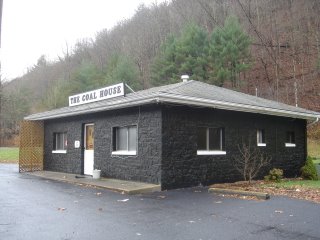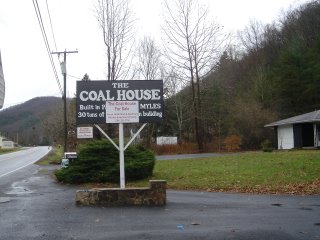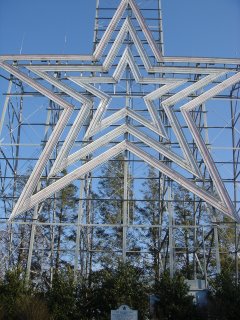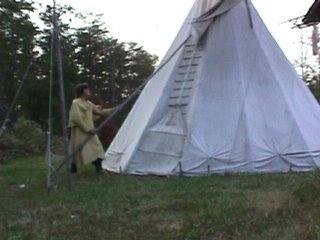
Thanksgiving.
In 2006, for me, Thanksgiving Day is about gratitude to Creator for the blessings of today, for family and friends, health and happiness, and the strength and resiliance to survive when those things seem absent.
 (These are my Aunt, my daughters, and my grandson,
(These are my Aunt, my daughters, and my grandson, 
all of whom are awesome and at the top of my list of blessings.)
Historically, the holiday has roots in history. This article, which I found at http://www.alternet.org/story/4391/, says quite a lot about that. It was written by Jacqueline Keeler, a member of the Dineh Nation and the Yankton Dakota Sioux. Her work has appeared in Winds of Change, an American Indian journal.
I celebrate the holiday of Thanksgiving.
This may surprise those people who wonder what Native Americans think of this official U.S. celebration of the survival of early arrivals in a European invasion that culminated in the death of 10 to 30 million native people.
Thanksgiving to me has never been about Pilgrims. When I was six, my mother, a woman of the Dineh nation, told my sister and me not to sing "Land of the Pilgrim's pride" in "America the Beautiful." Our people, she said, had been here much longer and taken much better care of the land. We were to sing "Land of the Indian's pride" instead.
I was proud to sing the new lyrics in school, but I sang softly. It was enough for me to know the difference. At six, I felt I had learned something very important. As a child of a Native American family, you are part of a very select group of survivors, and I learned that my family possessed some "inside" knowledge of what really happened when those poor, tired masses came to our homes.
When the Pilgrims came to Plymouth Rock, they were poor and hungry -- half of them died within a few months from disease and hunger. When Squanto, a Wampanoag man, found them, they were in a pitiful state. He spoke English, having traveled to Europe, and took pity on them. Their English crops had failed. The native people fed them through the winter and taught them how to grow their food.
These were not merely "friendly Indians." They had already experienced European slave traders raiding their villages for a hundred years or so, and they were wary -- but it was their way to give freely to those who had nothing. Among many of our peoples, showing that you can give without holding back is the way to earn respect. Among the Dakota, my father's people, they say, when asked to give, "Are we not Dakota and alive?" It was believed that by giving there would be enough for all -- the exact opposite of the system we live in now, which is based on selling, not giving.
To the Pilgrims, and most English and European peoples, the Wampanoags were heathens, and of the Devil. They saw Squanto not as an equal but as an instrument of their God to help his chosen people, themselves.
Since that initial sharing, Native American food has spread around the world. Nearly 70 percent of all crops grown today were originally cultivated by Native American peoples. I sometimes wonder what they ate in Europe before they met us. Spaghetti without tomatoes? Meat and potatoes without potatoes? And at the "first Thanksgiving" the Wampanoags provided most of the food -- and signed a treaty granting Pilgrims the right to the land at Plymouth, the real reason for the first Thanksgiving.
What did the Europeans give in return? Within 20 years European disease and treachery had decimated the Wampanoags. Most diseases then came from animals that Europeans had domesticated. Cowpox from cows led to smallpox, one of the great killers of our people, spread through gifts of blankets used by infected Europeans. Some estimate that diseases accounted for a death toll reaching 90 percent in some Native American communities. By 1623, Mather the elder, a Pilgrim leader, was giving thanks to his God for destroying the heathen savages to make way "for a better growth," meaning his people.
In stories told by the Dakota people, an evil person always keeps his or her heart in a secret place separate from the body. The hero must find that secret place and destroy the heart in order to stop the evil.
I see, in the "First Thanksgiving" story, a hidden Pilgrim heart. The story of that heart is the real tale than needs to be told. What did it hold? Bigotry, hatred, greed, self-righteousness? We have seen the evil that it caused in the 350 years since. Genocide, environmental devastation, poverty, world wars, racism.
Where is the hero who will destroy that heart of evil? I believe it must be each of us. Indeed, when I give thanks this Thursday and I cook my native food, I will be thinking of this hidden heart and how my ancestors survived the evil it caused.
Because if we can survive, with our ability to share and to give intact, then the evil and the good will that met that Thanksgiving day in the land of the Wampanoag will have come full circle.
And the healing can begin.










